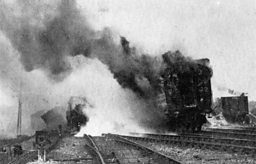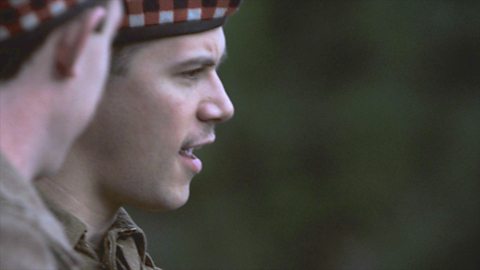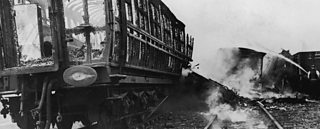Recreating Britain鈥檚 most deadly train crash for television
By Ian Lilley, Director

Making , we were faced with a problem: to recreate and investigate the events of one hundred years ago as accurately as possible.
Using our smartphones, we could begin to visualise what a soldier staggering around the wreck might have seen
Documentation about what the crash actually looked like was thin on the ground. We could find little more than a handful official descriptions and a few rough sketches.
To really get a picture of what happened and understand this terrible incident in the railway’s history, we decided to build a recreation of the crash using a model train collection. We laid it all out in a large hall, complete with points, trains and a signal box. And with the help of the programme’s designer, rail enthusiasts and a whole lot of books, we pieced together the story using a train set, a tape measure and a variety of cameras.
We discovered the camera lenses of our upside-down smartphones were at approximately the same height in relation to the model as a human’s point of view in the real world. We could then begin to visualise what a soldier staggering around the wreck might have seen.

We also wanted to find out what the view of the trains would have been like from the signal box. By making careful scale measurements we discovered that, although the trains passed directly in front of the signal box, the all-important local train was partially obscured by other trains on the tracks outside.
Not only was it a simple, old-fashioned solution to the filmmaking problem of visualising a century-old event, but it also gave us a set of photographs of the model that were used extensively in the programme’s graphic sequences.
Only after the model had been put away did we discover an extensive drawing of the crash hidden away in the archives. Fortunately, it matched!

Britain鈥檚 5 worst rail crashes
- Quintinshill (1915) – 226 killed, 246 injured. Quintinshill remains the rail disaster that has claimed the most lives on British soil. With the advances in safety and working practices made in the last 100 years, it is unlikely ever to be beaten.
- Harrow and Wealdstone (1952) – 112 killed, 340 injured. This accident bears remarkable similarities to Quintinshill – an express crashing into a stationary local, and moments later another express careering into the wreckage. But thanks to electric lighting and stronger construction, the carriages did not collapse, and there was no fire
- Lewisham (1957) – 90 killed, 173 injured. In thick fog around London, the driver of a steam locomotive missed two signals telling him to slow down and crashed into the back of a stationary train. Like Harrow and Wealdstone, it would’ve been prevented by British Rail’s Automatic Warning System, which applied brakes immediately when a driver passed a signal at danger
- Armagh (1889) – 80 killed, 260 injured. The Armagh rail disaster was caused by half of a long train running down a steep hill after the brakes weren’t correctly applied. It hastened the adoption of automatic continuous brakes, where a vacuum is applied to hold the brakes off rather than on - meaning that if the vacuum fails, the train stops.
- Tay Bridge (1879) – roughly 60 killed. The first Tay Bridge collapsed in high winds as a train passed over it. The designer of the bridge died within the year, and his design for the Forth Rail Bridge was not used.
-
![]()
Adrian Searle examines the tragedy and its aftermath
- Watch or 9pm on 麻豆官网首页入口 Four tonight
A personal view
Suggestions that some trapped soldiers were shot by their own officers have long been denied by officials. Now, one hundred years later, one of the most senior veterans of the Royal Scots shares his thoughts:-

Did officers really shoot trapped men at Quintinshill?
A Royal Scots veteran considers reports that officers shot their own men at Quintinshill.

